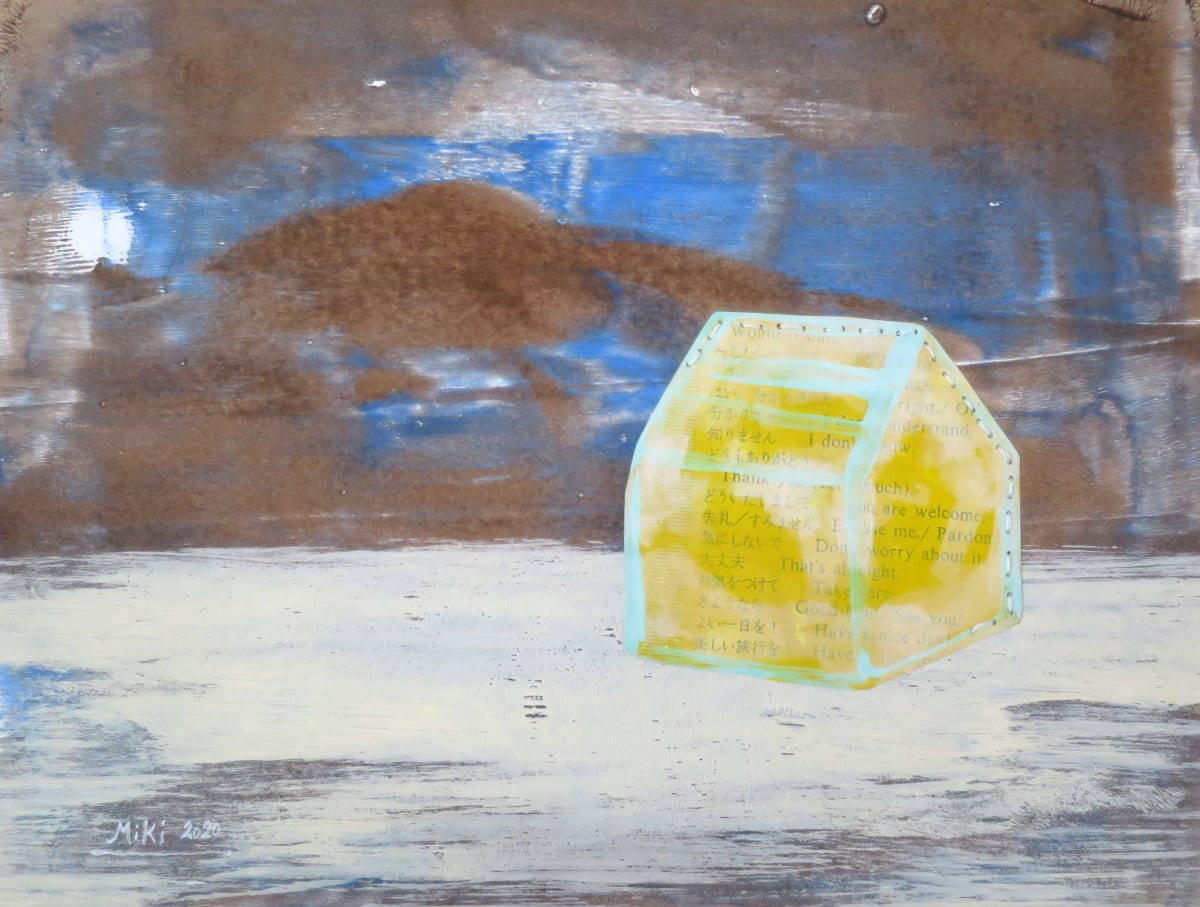The Vault: Miki Nishida Goerdt - Remembering to Heal
- January 06, 2024 - February 03, 2024
- Exhibition
- /
- Artwork
- /
- Artists
On Site Exhibition

A yellow house is printed on a page copied from the Japanese-English dictionary that I brought with me when I moved to the U.S. in 1998, and that saw heavy use in my college and graduate school years, when I didn’t speak English well. The white thread stitched around the house symbolizes my attempt to secure a place for myself in the small, predominantly white community in Iowa where I first studied. During my four years in this town, I never felt free from judgment over my skin color and accent, and this is why the stitching is incomplete. The Japanese writing in the yellow house appears faded where the white paint begins to conceal it. This partial concealing reflects my experience of assimilation. The stitching binds the yellow house to the white background, which symbolizes the white culture that dominated the town. Because the town was built on land that belongs to the Sauk, Meskwaki, and Wahpeton tribes, I purposely left some parts of the ground unprinted, exposing its base color.
- Miki Nishida Goerdt
- A yellow house on the white ground
- Mixed media with gelatin monotype
- 12 x 15 in
- $150
